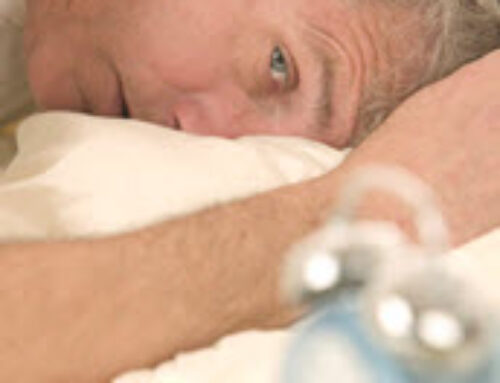Primary insomnia is comprised of three components—difficulty getting to sleep, trouble staying asleep and early morning awakenings. People with chronic sleep difficulties may experience all three of these components. The nonbenzodiazepines Ambien (zolpidem), Sonata (zaleplon) and Lunesta (eszopiclone) are the most commonly used drugs in the treatment of primary insomnia, but they’re not without their problems.
 “Complex sleep behavior” has emerged as a phrase which encompasses various problems that can occur after taking a sleeping pill. Such adverse circumstances include e-mailing, cooking, driving and self-injuries such as gunshot wounds and even suicide attempts – all done in an apparent state of amnesia, with no recall the next morning. In 2007, the FDA issued warnings regarding these possible behaviors on all medications approved for sleep difficulties, but in 2019 they bumped up warnings for the “Z” sleep aids Ambien, (zolpidem), Sonata (zaleplon) and Lunesta (eszopiclone) to a black-box level.
“Complex sleep behavior” has emerged as a phrase which encompasses various problems that can occur after taking a sleeping pill. Such adverse circumstances include e-mailing, cooking, driving and self-injuries such as gunshot wounds and even suicide attempts – all done in an apparent state of amnesia, with no recall the next morning. In 2007, the FDA issued warnings regarding these possible behaviors on all medications approved for sleep difficulties, but in 2019 they bumped up warnings for the “Z” sleep aids Ambien, (zolpidem), Sonata (zaleplon) and Lunesta (eszopiclone) to a black-box level.
The FDA took this step to shed light on the potential seriousness of events that can occur while falling asleep, sleeping, or upon awakening. Their extensive investigation turned up 66 cases of complex sleep-related issues over a 26 year period that indicated either serious injuries or death. Serious events are very rare; however sleep behaviors are somewhat common and happen in 3% – 15% of those using the “Z” hypnotics. Ambien is most often identified as the culprit but that’s because it’s the most often prescribed “Z” drug. Risks are just as high with Sonata and Lunesta, and they go up with escalating dosages.
The crux of this matter is that the FDA now recommends discontinuing “Z” drugs in anyone who has experienced any sort of adverse sleep-related behavior, regardless of how mild or inconsequential. Why would the FDA feel so secure in taking the liberty to go as far as recommending discontinuation? For two reasons:
- Sleep behavior irregularities under the influence of these drugs exceeds the long-established parameter of having adverse events occur at a rate of 1% or less. Obviously then, occurrences at 3% – 15% are deemed far too high.
- The quantity and quality of the benefits of the “Z” sleep drugs are scant at best. On average, users fall asleep a mere 22 minutes faster than placebo – as measured via sleep studies. (This has long been confirmed in study after study). And these agents do nothing to improve sleep quality or have a positive influence on long-term health outcomes.
But will “Z” drug users conform to these recommendations and will prescribers withhold prescriptions if a patient admits to having experienced an adverse event upon questioning by the prescriber? From the prescriber standpoint, the acuity of what happened will likely rule, particularly if the event was serious enough to place the patient at significant risk. Such a circumstance would likely invite a conversation regarding an alternative sleep drug. But if the event was benign, such as getting up and 2am and e-mailing, patients are likely to fight back by proclaiming that this is no big deal. Then there’s the separate issue of whether or not insurance companies will continue to cover these medications in light of the FDA’s new recommendation.
In my decades of making psychotropic medication recommendations and helping people better manage their medications, I consistently find that people not only love their sleeping pills, but they also find them more helpful than objective research suggests. The placebo effect size of these drugs is huge, thus people are in denial as to how poorly they actually slept.
A patient of mine once told me: “Joe, sometimes I take my sleeping pills at night and sometimes I don’t.” “It comforts me to just know that I have them available.” Now that’s placebo power! “Z” drug users will not go quietly.




Leave A Comment
You must be logged in to post a comment.